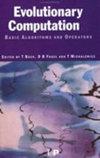面向智能设计的可进化处理器
IF 3.4
2区 计算机科学
Q2 COMPUTER SCIENCE, ARTIFICIAL INTELLIGENCE
引用次数: 0
摘要
Materio中的抽象进化是一种计算范式,其中算法重新配置材料的特性以实现特定的计算功能。本文讨论了如何通过选择纳米材料和目标应用的进化算法来设计Materio处理器中成功且性能良好的进化。开发了一种纳米材料网络的物理模型,该模型考虑了随机性以及欧姆和非欧姆导电的可能性,这是此类材料的特征。然后通过差分进化来利用这些不同的网络,差分进化优化了几个配置参数(例如,配置电压、权重等),以解决不同的分类问题。我们表明,理想的纳米材料选择取决于问题的复杂性,电导率的复杂电压依赖性有利于更复杂的问题,反之亦然。此外,我们强调了如何通过不同的配置参数来利用本征纳米材料的电学特性,阐明了这些技术的作用和局限性。这些发现为Materio处理器中纳米材料和算法的合理设计提供了指导。本文章由计算机程序翻译,如有差异,请以英文原文为准。
Towards Intelligently Designed Evolvable Processors
Evolution-in-Materio is a computational paradigm in which an algorithm reconfigures a material's properties to achieve a specific computational function. This article addresses the question of how successful and well performing Evolution-in-Materio processors can be designed through the selection of nanomaterials and an evolutionary algorithm for a target application. A physical model of a nanomaterial network is developed which allows for both randomness, and the possibility of Ohmic and non-Ohmic conduction, that are characteristic of such materials. These differing networks are then exploited by differential evolution, which optimises several configuration parameters (e.g., configuration voltages, weights, etc.), to solve different classification problems. We show that ideal nanomaterial choice depends upon problem complexity, with more complex problems being favoured by complex voltage dependence of conductivity and vice versa. Furthermore, we highlight how intrinsic nanomaterial electrical properties can be exploited by differing configuration parameters, clarifying the role and limitations of these techniques. These findings provide guidance for the rational design of nanomaterials and algorithms for future Evolution-in-Materio processors.
求助全文
通过发布文献求助,成功后即可免费获取论文全文。
去求助
来源期刊

Evolutionary Computation
工程技术-计算机:理论方法
CiteScore
6.40
自引率
1.50%
发文量
20
审稿时长
3 months
期刊介绍:
Evolutionary Computation is a leading journal in its field. It provides an international forum for facilitating and enhancing the exchange of information among researchers involved in both the theoretical and practical aspects of computational systems drawing their inspiration from nature, with particular emphasis on evolutionary models of computation such as genetic algorithms, evolutionary strategies, classifier systems, evolutionary programming, and genetic programming. It welcomes articles from related fields such as swarm intelligence (e.g. Ant Colony Optimization and Particle Swarm Optimization), and other nature-inspired computation paradigms (e.g. Artificial Immune Systems). As well as publishing articles describing theoretical and/or experimental work, the journal also welcomes application-focused papers describing breakthrough results in an application domain or methodological papers where the specificities of the real-world problem led to significant algorithmic improvements that could possibly be generalized to other areas.
 求助内容:
求助内容: 应助结果提醒方式:
应助结果提醒方式:


